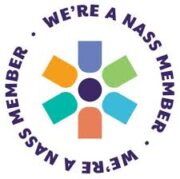Internet Safety Survey
Understanding What Our Pupils Know and Where We Can Improve

eSafety: Pupil Feedback – January 2025
38 pupils completed the survey and answered the following questions:
- Rate how safe you think you are online?
- What does ONLINE SAFETY mean to you? Give an example
- Can you think of a few risks with being online?
- If you see something that looks inappropriate, what should you do?
- Do you know where to look or who to ask for advice on Online Safety?
- If you answered ‘Yes’ to question 5, name where you would look or who you would ask about Online Safety advice.
- Is Online Safety, Internet Safety and eSafety all the same thing?
Summary of Data:
Online Safety Awareness:
- The majority of respondents feel confident about their online safety, with most rating their safety as 4 or 5 out of 5.
- Online safety is commonly associated with avoiding strangers, protecting personal information, and being cautious of scams and hackers.
Understanding of Online Safety:
- Most respondents define online safety as being cautious, not sharing personal information, and protecting against potential online risks.
- Common examples of online safety include avoiding sharing passwords, being careful about whom they interact with online, and recognising inappropriate content.
Identified Risks:
- Common risks mentioned include cyberbullying, identity theft, scammers, hacking, and exposure to inappropriate content.
- Many are aware of the dangers of interacting with strangers and the potential for personal information to be misused.
Response to Inappropriate Content:
- The universal response to seeing something inappropriate online is to tell an adult.
- There is a strong inclination to seek help from trusted adults, parents, teachers, or even authorities like the police.
Sources for Advice on Online Safety:
- Respondents largely rely on family members (parents, grandparents), teachers, and specific adults at school for advice on online safety.
- Some mention organisations such as Childline or NSPCC as resources.
Perception of Online Safety Terminology:
- There is a mixed understanding of whether “Online Safety,” “Internet Safety,” and “eSafety” are the same or different concepts.
- Some believe they are synonymous, while others think they have distinct meanings, with eSafety sometimes associated with both online and offline safety.
Recommended Actions:
Enhance Education on Online Risks:
- Conduct sessions focusing on the specifics of online risks such as phishing, hacking, and cyberbullying.
- Use real-life examples to illustrate these risks and their potential consequences.
Clarify Terminology:
- Develop a clear guide or infographic explaining the terms “Online Safety,” “Internet Safety,” and “eSafety,” highlighting similarities and differences if any.
Promote Reporting Protocols:
- Reinforce the importance of reporting inappropriate content to a trusted adult.
- Create a clear, accessible protocol for students to follow when they encounter unsafe situations online.
Expand Resource Awareness:
- Provide a list of trusted resources and organisations (e.g., Childline, NSPCC) in school handbooks and on the school website.
Regular Reviews and Updates:
- Ensure frequent revisits to eSafety topics through Computing curriculum so pupils are recalling their knowledge and embedding their understanding
- Introduce periodic assessments to gauge students’ understanding of online safety and adjust the curriculum accordingly.



